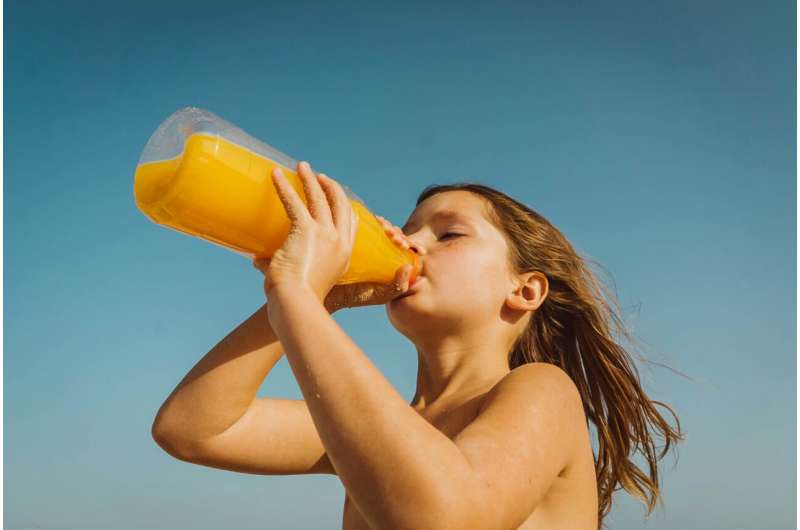This article has been reviewed according to Science X's editorial process and policies. Editors have highlighted the following attributes while ensuring the content's credibility:
fact-checked
trusted source
proofread
Is that glass bottle of orange juice better for the planet than a plastic container?

Which packaging type for a 12-ounce, single-serve container of orange juice would you choose as the most sustainable option:
- Aluminum/canned, made with recycled material;
- Carton, described as biodegradable/compostable;
- Glass, 100% recyclable; or
- Plastic, described as biodegradable/compostable?
If you were like the U.S. consumers surveyed by food scientists in a University of Massachusetts Amherst study, you'd prefer glass and believe it was the most sustainable choice. And you all would be mistaken.
"Glass was the most sought-after and most highly esteemed packaging type," says Nomzamo Dlamini, lead author of the paper recently published in the journal Sustainability. Dlamini, a food science Ph.D. candidate, was a recent visiting Fulbright scholar from the University of Pretoria in South Africa studying in the UMass Amherst lab of senior author Alissa Nolden, assistant professor of food science.
"But it turns out, glass is actually among the least sustainable if you look at the whole packaging lifecycle," Dlamini added.
When asked to rank the packaging choices from their perception of the most to least sustainable, overall the consumers responded: glass, carton, aluminum and plastic.
Though food packaging sustainability varies depending on the type of product and packaging, the size and weight of the container and other variables, in the case of the single-serve orange juice, a carton would be the most sustainable, followed by plastic, then canned and, finally, glass.
This came as a surprise even to Dlamini. "I was shocked to read the lifecycle assessment from the experts that it takes so much energy to produce glass and recycle it—much more than what it takes to make or recycle plastic," she says.
The study states, "The production and end-of-life impacts of plastic are less than that of glass, plastic is lighter and thus requires less energy to transport, furthermore, the aseptic sealing process of plastic containers using steam is less energy demanding than the retort system used for glass."
The study aimed to understand the motivation behind consumers' packaging choices, while also weighing price, lifestyle and other attitudes. In turn, the data can help industry experts understand what consumers think, believe and prefer, and educate them on how to make more sustainable choices.
"We designed a questionnaire using a method called conjoint analysis, which mimics a real-life situation where you're presented with various options and you have to make a trade-off," Dlamini says. "And we try to understand at the end of the day, what matters to people. The whole idea behind the study was to get an understanding of what people think and what drives their choices."
Nolden points out that while many consumers expressed an intention to purchase sustainable packaging, in the end the top motivating factor was price—particularly the lowest price—followed by packaging type, product claim and packaging claim.
So, the ideal orange juice option—culled from the 847 adult consumers who answered the online survey—was priced at $1.10 per 12 fluid ounces, packaged in glass, locally produced and labeled as 100% recyclable.
The message to the food industry is that consumers are motivated to choose sustainable packaging, as long as the price is right.
"These sustainable packaging options should be clearly labeled as such, effective (e.g. not defective or just as durable as conventional packaging), and affordable to increase consumers' motivation and adoption of sustainable packaging for food and beverages," the paper states.
Ultimately, there is something even more important than choosing the best packaging when it comes to consuming food with a focus on sustainability.
"Overall, while packaging choices contribute to environmental outcomes, the most impactful and practical way consumers can contribute to sustainability efforts is to reduce or avoid food waste," the paper concludes.
More information: Nomzamo N. Dlamini et al, Unpacking Consumer Preferences: Perceptions and Sustainability of Packaging Material for Orange Juice, Sustainability (2024). DOI: 10.3390/su16146202
Provided by University of Massachusetts Amherst





















